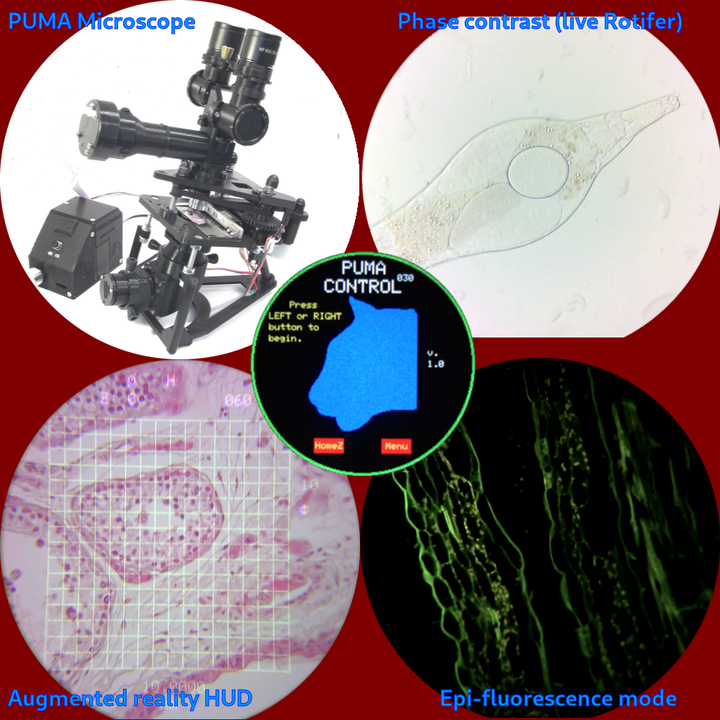PUMA 3D Printed Open Source Microscope

PUMA is 3D printed open source portable modular microscope with augmented reality, fluorescence, phase contrast, epi-illumination, epi- and trans-polarisation and other features. You can either build it fully DIY or purchase the basic scope ready made and upgrade it as required (see below for details). It uses professional quality optics including the option of full Kohler illumination and oil-immersion, and has some very advanced features not usually found on even the most expensive commercially available microscopes. This includes a computer-controlled and programmable TFT-screen-based Spatial Light Modulator for optical Fourier filtration allowing for optimised / dynamic / adaptive apertures. Also, unique to any 3D printed microscope to date, an augmented reality projector system - which is also programmable. Some advanced applications you can do with these are AI microscopy, specimen-directed aperture optimisation, digital measurements, 3D tomography, Fourier ptychography, Schlieren phase contrast and more. The system is fully customisable - the original FreeCAD source files are all available on the GitHub page so you can customise the scope to meed your individual project needs. The PUMA system is also peer reviewed and published in the Journal of Microscopy ( https://onlinelibrary.wiley.com/doi/10.1111/jmi.13043 ) so you can easily reference it if you use a PUMA system for your own research. If the DIY aspect puts you off then fully built ‘Foundation scope’ configuration PUMA microscopes (i.e. the full working basic microscope without advanced add-ons) can be purchased from the OptArc store (international tracked delivery is available) at https://www.optarc.co.uk where you can also download detailed user manuals as PDF files (free of charge) - just visit the ‘Support’ pages.
Project Author(s)
Paul J. Tadrous
Project Links
https://github.com/TadPath/PUMA
Project Video
https://www.youtube.com/watch?v=7UbkrZyNgpo&list=PLrr0F9DMiPqWsysBpb6bD_BwT6ZyQg3L1
This post was automatically generated by Paul J. Tadrous